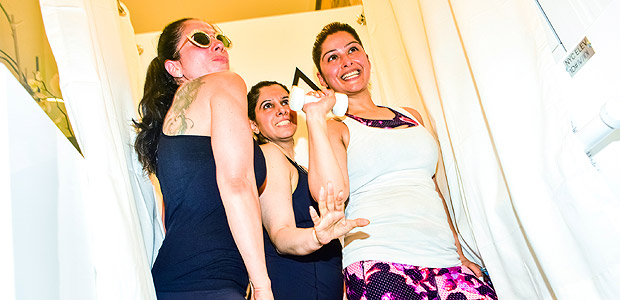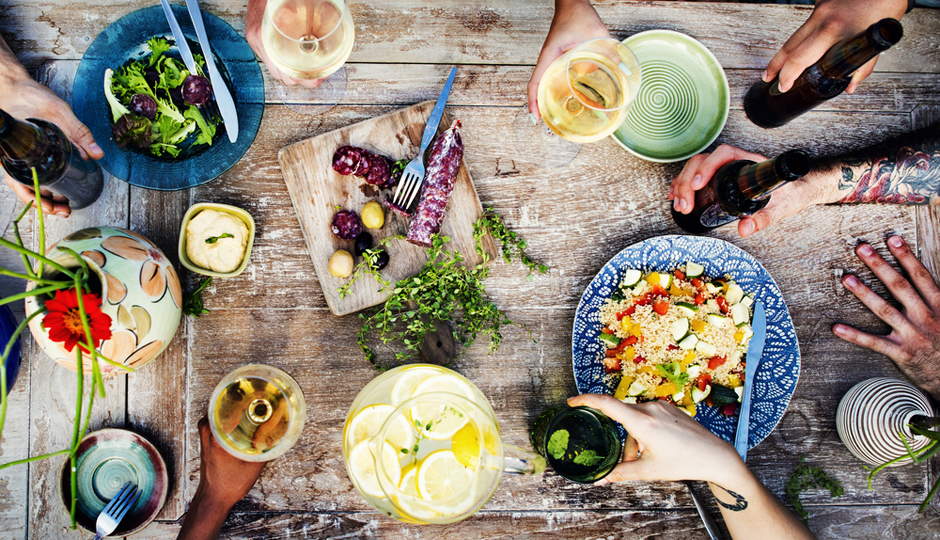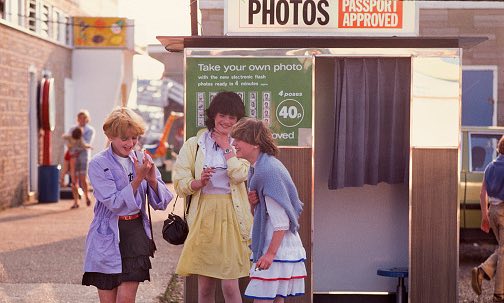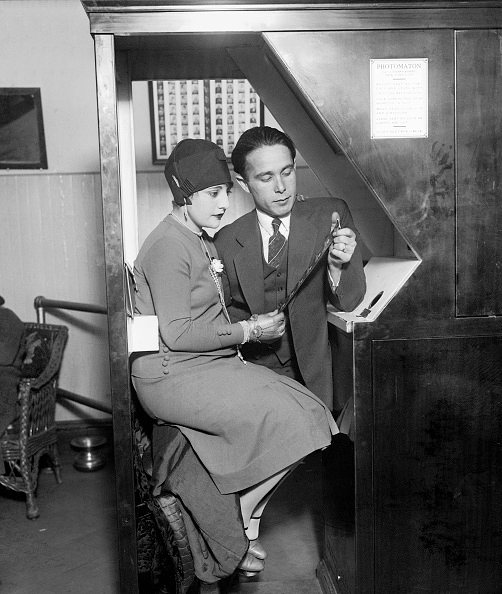Selfies enter a new generation and become a business opportunity
Dolly Faibyshev/The New York Times
First came the selfies. Then, selfie sticks. Now, a new era emerges: selfie booths, which have been adopted by some stores and other businesses, in a kind of new generation of photo booths.
In the age of social media, these booths seem to be the new method to engage customers and build a brand.
In various locations of the American eyewear brand Warby Parker, those with vision problems unsure about the new frame can enter the booth, take some photos, and email them to friends and family for a second (and third, fourth, and fifth) opinion.
At Paintbox, a nail salon in New York, customers can get their nails done and then insert their hands into the booth to immortalize their new metallic blue layer.
Meanwhile, at Doomie’s, a vegan restaurant in Toronto, Canada, there is a selfie room where customers can take a photo and share it on social media, usually with a caption like “right after coming out of the food coma.”
“When we planned the restaurant, we wanted smart ways to promote it, and the younger crowd always wants something they can ‘Instagram,'” said Hellenic Vincent De Paul, one of the owners.
The Tracy Anderson Method gym chain (which has clients like Gwyneth Paltrow) has also adopted a booth in its new location in New York.

“There’s no filter to make me look like I’m 25, but that’s okay. The trend is to embrace it,” said Morgen Schick, 52, a Ford model turned beauty and anti-aging guru.
15 Genius Photography Tricks to Boost Your Instagram
Photos are magical, immortalizing moments, smiles, landscapes, affections, and fondness. Nowadays, with social media specializing in photos, things have become even better and more dynamic. Or not.
1. Clean the camera lens
Basic tip. Our phones are with us all day and go to all kinds of places; accumulated grease or dirt on the lens can make a difference. Use a cloth or even your shirt to clean it.
2. Set up a scene
Avoid taking dull photos; try to set up a scene minimally, add colors or accessories to your image. Want to take a photo of coffee? You can delicately rest your hand on the table, put on sunglasses strategically, and add any other beautiful accessory nearby and click!
3. Get close to the object
Several phones enhance their lighting when they get close to an object. Use this to your advantage to take photos with more detail.
4. Light it well
Prefer natural light; using sunlight in the photo will make it more attractive. If you are in a dark environment, instead of using your phone’s flash, ask someone to illuminate with their phone’s flashlight; this also avoids red eyes.
5. Hold the phone firmly
The firmer you hold the phone, the clearer your image will be. This tip is especially important for low-light environments. Try to always hold the device with both hands, using the volume button to take photos.
6. Use Instagram’s “Adjust” option
The Instagram alignment tool is not widely used but can make a big difference, especially for aligning photos where the horizon appears, such as sunsets, beaches, etc.
7. Take many photos
A very common tip for selfies, but it applies to anything you want to photograph. Take plenty of photos because we don’t always get it right on the first click; sometimes a few extra shots can give you a better perspective of what you want to capture.
8. Don’t use Zoom, crop the image
Avoid using zoom; in most phone cameras, it’s digital, resulting in a loss of photo quality. Prefer to take the complete photo and then crop it; many smartphones have cameras with 8 megapixels or more, meaning you can crop substantially and still have resolution for web display.
9. Editing is not using a filter
Instagram or other app filters are great, but they take away the authenticity of your photo. Instead of using the same filter that millions of people use, prefer to edit the image by adjusting contrast, sharpness, color temperature, and brightness.
10. Don’t add blur
You know that “Tilt Shift” option? Forget that it exists. The phone’s camera already produces some blurring in the image due to the lens not having much quality; adding more blur will only make things worse, besides looking too artificial.
If you want the viewer to focus on a specific thing, just make it the main object of the frame. On some devices, just point to the main object with your finger, and the rest loses focus.
11. Use lines for framing
Any device has the option of lines for framing in its settings. They make it much easier when taking a photo.
12. Pay attention to the background
Keep an eye on the background of your photos; choose a beautiful place to be well set. Beware of the messy bed, broken fan, or a friend naked on the bed. If you didn’t pay attention to what was in the background, someone will.

13. Trick for food photos
Food photos are already overused on Instagram, but if you really think that meal should be remembered forever, make sure the edges of the plate are clean. Now that the table looks beautiful and tidy, stand on the chair and take the image from above. A bit embarrassing, yes or for sure?

14. Less is more
Most people don’t want to think too much to figure out what’s happening in the photo. Opt for simple photos, try to portray simplicity. If you want to stand out, avoid posting overly confusing photos that only you understand.

15. Leading lines
Guiding the eye within the image can be the key to success. Use the natural lines of the scene to create magic!

Don’t forget that your photos reveal who you are; show the world your perspective, whatever it may be. The important thing is to have fun!
Photobooths: the beginning and their evolution
The use of photobooths in developed countries has been happening for a long time. In addition to serving as a form of entertainment, booths offer photo printing for official documents such as identity and passport photos.

Photobooth at the Butlins holiday camp (Skegness) in 1982.
Photograph: Barry Lewis/In Pictures by Getty Images
In the United States, long before Instagram, iPhones, Snapchat, and Kim Kardashian, there was a Siberian immigrant in New York who was about to get very rich. Fascinated by his Brownie box camera, a Kodak device that brought photography to the masses, Anatol Josephowitz arrived in Manhattan with plans to go further, foreseeing the birth of the selfie 80 years before its peak.
In 1925, Josepho unveiled his Photomaton, a small automatic studio with a stool that would return a strip of eight photos for 25 cents. His invention was a sensation, making Josepho famous. In 1927, he sold the US rights to his machines for 1 million dollars.

Anatol Josepho and his wife, sitting in his Photomaton.
Photograph: Bettmann Archive
Josepho had invented the first working photobooth, which then expanded to shopping centers, post offices, and pharmacies. And when they weren’t occupied by lovebirds and best friends, their swiveling stools provided a more serious service for customers seeking a passport photo.
The UK passport issuance agency (similar to the Federal Police in Brazil) confirmed that travelers can submit photos taken on their mobile phones online. Does this indicate the end of photobooths? “Photo-Me,” the largest photobooth company in the UK (which supplies Post Offices, subway stations, and pharmacies like Boots, among others), has not issued an immediate response to this question, but there are signs that photobooths are entering a new era.
For “At Photobooths,” a company that started with a single rental booth in 2011, demand has grown so much that it now manufactures its own booths for the market. It has sold more than 3,000 units for use at weddings and other events. “Birthdays or bar mitzvahs are also popular, and we even did some divorce parties,” says Laura Coles, the company’s marketing manager.
The company’s new “Magic Mirror,” launched last year, cost £5,000 and is designed to be similar to old full-length mirrors. The glass acts as a giant touchscreen with a camera behind it. “Early on, we decided to remove the stools from our first booths because, at weddings, people ended up crowding and not using the seat anymore,” adds Coles.
Similar technology is increasingly being deployed in “smart” changing rooms by clothing retailers; “selfie mirrors” allow customers to share images of new clothing models, indirectly advertising the store and enhancing its presence on social media. Some restaurants have added booths as an extra service for photo enthusiasts. “Customers like a memento that’s not just on their phone,” says Scott Collins, co-founder of the MEATLiquor chain. Their restaurants now include booths supplied by Snaparazzi, which provides retro machines as well as originals from the 1960s.
For the first time, Fotomaton provided a place where people could unconsciously relax, far beyond the expensive and cramped photography studios of the time. At “At Photobooths,” Coles says that things haven’t changed much. “I think the growth of the selfie has influenced the industry, but I think booths are different,” she adds. “They give us an excuse to take many photos of ourselves without feeling like a ‘fool.’ They feed the ego in a positive and funny way.”
Source: The Guardian

